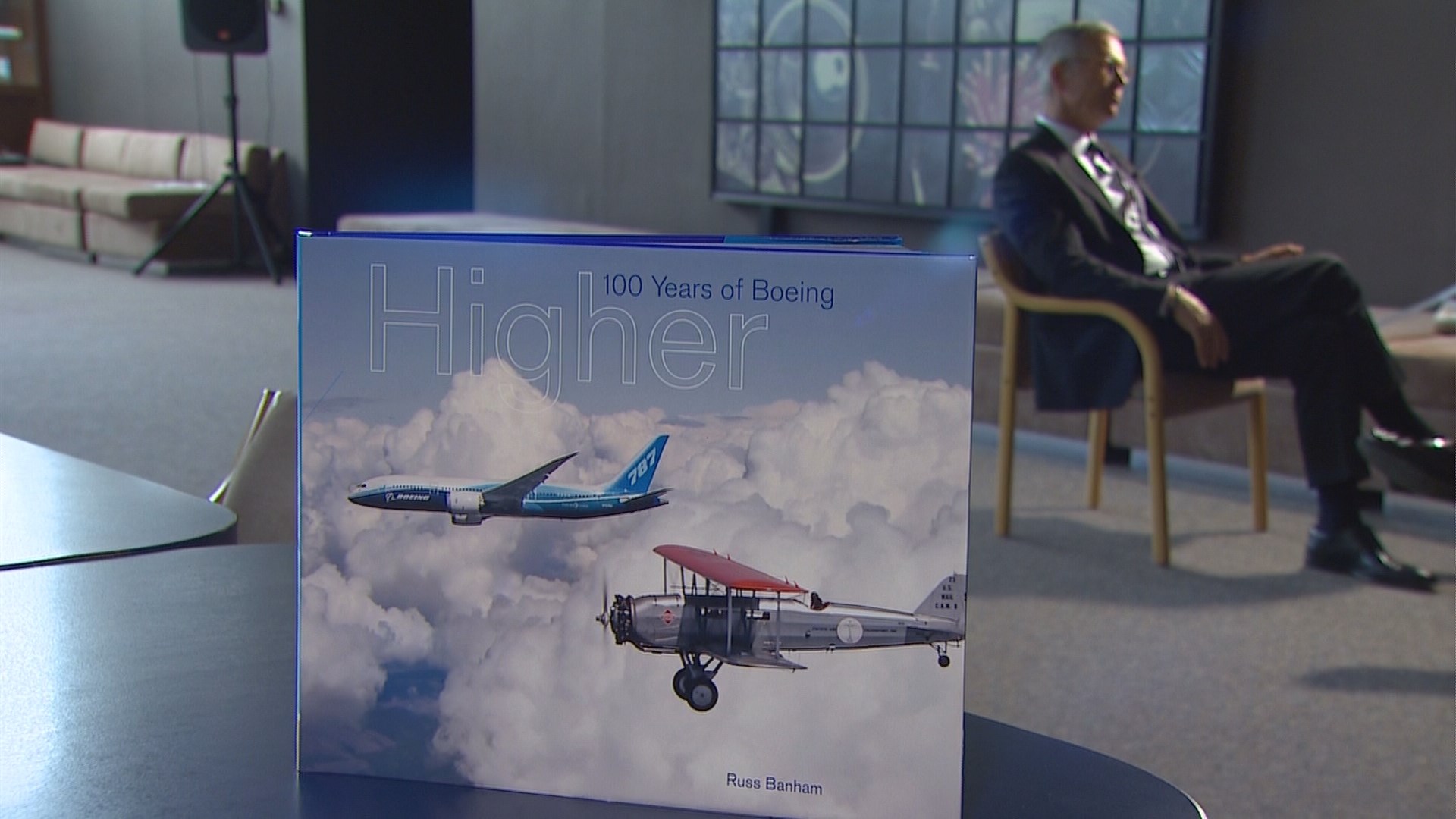Next year marks a huge milestone in Western Washington history -- Boeing's 100th birthday.
In 1903 -- the same year the Wright brothers first flew -- Bill Boeing arrives in Washington state to go into the timber business.
Thirteen years later, in 1916, the flying bug bites and Boeing is up in the air for the first time.
His first plane was built in a boathouse on Seattle's Lake Union and the Boeing Company was born.
"For any company to survive 100 years is remarkable, but in this industry it's virtually impossible," said author Russ Banham.
They say the rest is history and Banham said history is full of risks.
"If you look at Boeing's history, time and again, it looked like it was headed into bankruptcy," he said.
For decades, Boeing found itself lagging behind its competitor Douglas Aircraft.
In the 1930s Boeing created the cutting edge model 247. Considered by many the first modern airliner, bad decisions limited the sale of the plane.
Another example: The 307 Stratoliner was pressured, but Boeing only sold 10.
That's in sharp contrast to today, when sales and finances are setting records. Boeing bought out its competition and is not the biggest company in aerospace.
In his book "Higher: 100 years of Boeing," Banham documents the company's first century.
It's his 23rd corporate history.
"I started as a business journalist," Banham said. "I wrote for Forbes and Inc. Financial Times and the Economist."
How Boeing ticks and how it has survived intrigued Banham.
"It's sort of two histories intertwined," he said. "One, the aeronautical ingenuity. The other, this business constantly competing against brilliant companies like McDonnel Douglas and Hughes and Rockwell."
Heavily illustrated, this is not a business book about balance sheets. Banham's book is really a collection of many stories.
A little-known one led to transformative change for the company: Operation LUSTY.
It's not what you'd think.
"Nearing the end of World War II, the Nazi's are in retreat," said Banham. "And General Hap Arnold hears about this secret aeronautical research facility, but didn't where it was."
The Allies knew the German's were experimenting with advanced aircraft designs and gaining a technological edge. Just before the end of the war, the Army puts together a team to find and exploit the German research center.
"And on this group is George Schairer, who is a high-ranking Boeing executive at the time," Banham explained. "And they dub the program LUSTY for Operation Luftwaffe, Secret Technology."
The research center contained designs for planes with swept-back wings and jet engines.
"Boeing was able to get a jump on its competitors in the developing what is today the essential for a jet -- it's the swept wing," Banham said. "It became the B-47 and the 707. And has been used for every jet airliner since."
A lot can happen in 100 years. Boeing's history is really the history of much of American aerospace during the 20th Century and the first part of the 21st.
The story includes putting men on the moon and the birthing pains of the 787. It also includes how the company initially underestimated the threat from a European startup named Airbus.
"Airbus was ignored until its planes started to sell," said Banham.
There's a lot to fit in some 250 pages. The question: Will there be another 100 years?
"I'll go out on a limb and I think there are very few business organizations in the world today that combine the ingenuity, the skill, the sort of 'can do' resolve of Boeing," said Banham.
Copies of Banham's book are now available at Boeing stores, Boeingstore.com and the Museum of Flight store. Amazon is expected to have the book available starting August 4.


![635731940154644237-BillBoeingBook [ID=30545439]](http://cdn.tegna-tv.com/-mm-/33d97f8a03d5ea06baca0f7a30eca34c8bd87643/r=500x281/local/-/media/2015/07/22/NWGroup/KING/635731940154644237-BillBoeingBook.JPG)
![635731940659310707-RussBanhamBook [ID=30545463]](http://cdn.tegna-tv.com/-mm-/33d97f8a03d5ea06baca0f7a30eca34c8bd87643/r=500x281/local/-/media/2015/07/22/NWGroup/KING/635731940659310707-RussBanhamBook.JPG)
